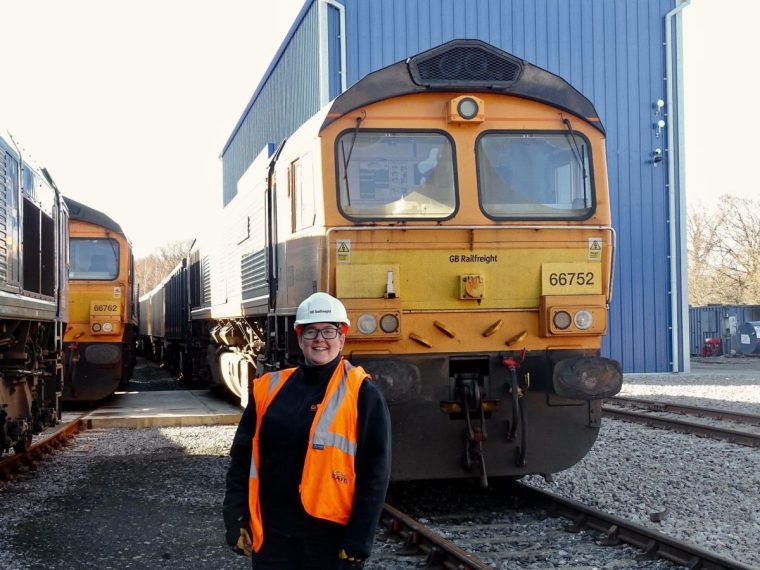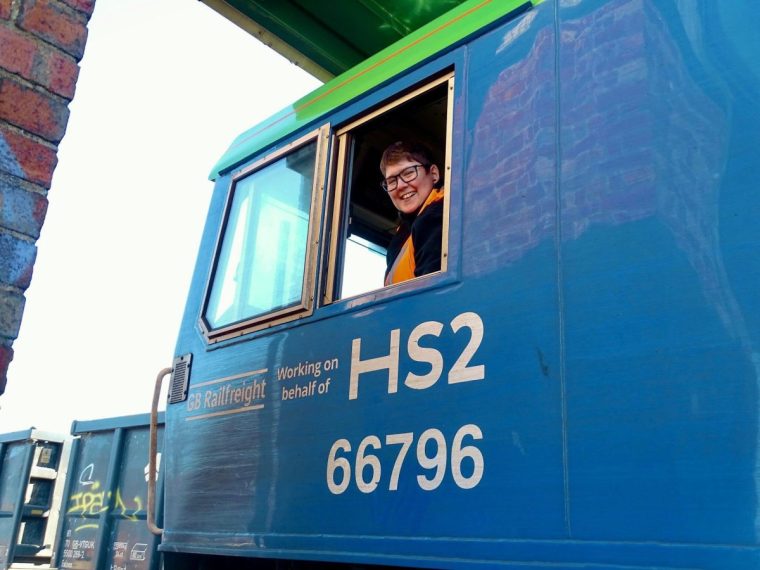Train Driver Life: Amazing Perks and the World’s Best Sunsets
Helen Gander, 40, has been a train driver since 2008. She is one of a growing number of women working in the rail industry and has dedicated much of her time to advocating for more women and neurodiverse people to join the industry. Here she talks about why it’s a dream job for her
I moved to London from Warrington, Cheshire, when I was 18 with no job and no real plan except for hanging out with friends and being with a girl I’d met. I had to find something to keep myself afloat, so I applied to do whatever was available: telesales, telemarketing, railways – anything.
Thameslink was the first company that gave me an interview and, eventually, a job at St Alban’s station as a train dispatcher. I was the one standing on the platform, blowing the whistle – I loved it. I worked with a great bunch of people. It was a great job and I’ve never looked back.
I then became a shunter, which involves helping to move trains in and out of depots, and becoming a train driver after that just seemed like a natural progression. As a freight train manager, I now make just over £70,000 a year.
It’s not an easy job by any means. The training process to become a driver is really hard, like trying to cram an A-level into 11 months. There is a thick rulebook that I had to learn inside and out, like learning the Yellow Pages.

I learned about routes, how trains work and move and how to fix them, and spent around 250 hours of driving with an instructor, essentially holding my hand.
The training ends with what is essentially a two-week driving test. I had to drive every single route I’d be operating, know where every single signal and junction was, and the names of every bit of rail. It’s not just sitting back and pushing a button – you’ve got to be pretty self-sufficient. If the train breaks down, there’s no RAC or AA to rescue you.
One thing I love about my job is that I see amazing sunrises and sunsets. I’ve been on holidays to places like Thailand and watched the sun go down, but some of the best sunsets I’ve ever seen have been at work on the railway. I see the changes of the seasons, wildlife, birds – it’s like working outdoors indoors. I’m not exposed to the elements, but I witness them all through the window.
It’s good not to be stuck in an office. My office is mobile, and the view is ever-changing – and there’s no one micromanaging you. But I love working with the huge team that runs our railways – the shunters, signallers, local managers and control centre staff. They’re all excellent, professional people.
I do a lot of work on engineering sites, so it can be physically demanding. When they’re digging up the railway, I turn up with a freight train with the stone that’s going to go onto the track that they’re relaying.
When I was driving passenger trains, I worked 9 and a half hours a day. Now I’m driving freight trains, I often do 12-hour shifts starting at three o’clock in the morning and finishing at three o’clock in the afternoon. The shifts tend to be longer because freight trains go from terminal to terminal with one driver, whereas passenger trains might have four different drivers for one trip. I’ll sometimes do a big week and work 45 hours, then have five days off.
You really need to have an understanding family. My wife, Claire, who works on the railway as a dispatcher, must be the most understanding person I know. It’s not the sort of job where you can burn the candle at both ends and go to work tired the next day. I have missed family events because I had to be up for work in the middle of the night.
I started my Instagram account when I moved to freight to document the change, mainly so I’d have something to look back at. One day, I did a post about being diagnosed as autistic, which I’d known for a long time but hadn’t done anything about because I was scared I wouldn’t be able to drive trains anymore, which of course, is not true. I’d gone through spots of mental ill health over the years because I wasn’t able to get the support that I needed. It’s only in the last five years that we’ve really cottoned on to how autism and ADHD manifest and show up in women and girls.

After that post, I was approached to write something for ASLEF, the train drivers’ union, and it just exploded. I had so many messages from people saying that it had resonated with them. There was a young girl with autism who messaged saying she didn’t think she could drive trains, but is now training to be a driver for Transport for Wales after seeing my article. I was blown away.
Now I’m helping my company to streamline their processes to make them better for neurodivergent people . This is a great place to work for everybody, especially if you’re neurodivergent, whether customer-facing, driving trains or in the control centre.
Being a woman on the railway is great – but there’s still room for progress. On the passenger trains and train operator side, more and more women are being recruited – but freight can be a little behind. Sometimes the facilities aren’t the best, and uniforms in the past have been ill-fitting, with no pockets. Things are changing, though. Our uniform coordinator is a hero. I have the best jacket I’ve ever worn, it fits well, the arms aren’t too long, it takes my shape into account – I’d wear it outside if it wasn’t bright orange.
Ticket to ride: train drivers in numbers
- Britain has a shortage of train drivers. The Government is reducing the minimum age at which you can obtain a licence from 20 to 18, and hopes to boost recruitment among women and people from a minority ethinic background.
- Qualified freight train managers working 34.5 hours a week over four days (with options for overtime) earn £70,889.
- Pensions for railway workers are based on final salary, depending on the number of years worked.
- Most train drivers enjoy reduced train travel as a perk, typically 75 per cent off the normal cost, including on international services
Comments
Post a Comment